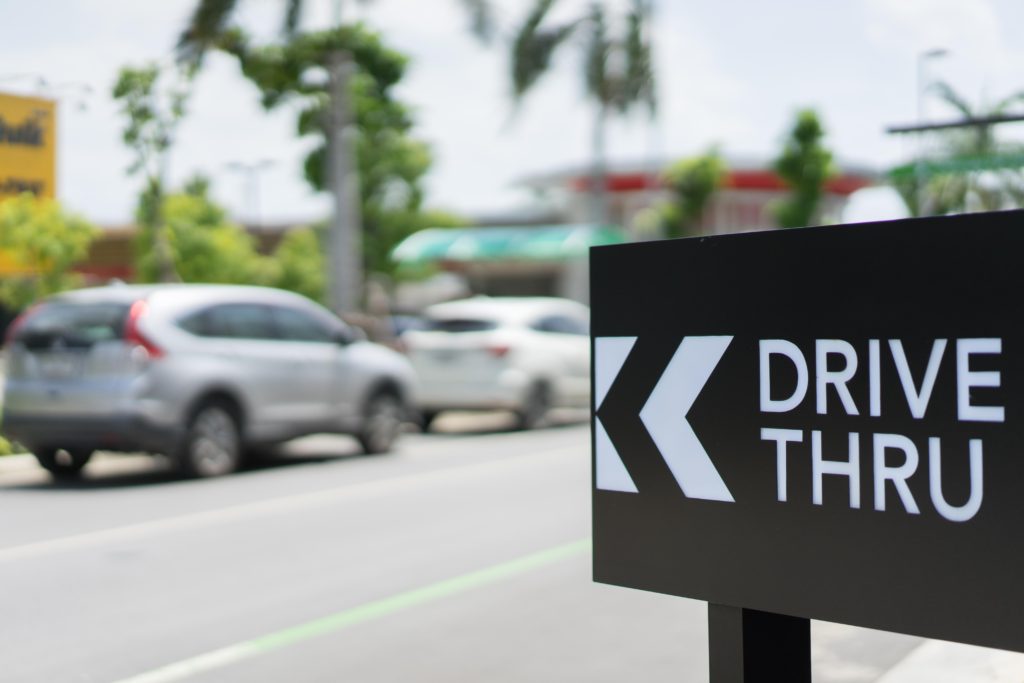9:30 am
5 Key Considerations for Executing the Perfect Drive-Thru Design

In wake of the innumerable changes that the pandemic has brought to our lives, the quick service restaurant (QSR) industry is one sector that has been transformed forever. Technological and internal process changes have made things like contactless food pickup, online ordering, and increased drive-thru usage the new norm for today’s consumers.
Above all else, the desire for convenience has reached dizzying new heights, making customers more demanding, more impatient, and more particular than ever. According to a recent survey by Bluedot, 90% of QSR diners said that four-to-seven cars in a drive-thru lane were too long to wait for a food order. Another 66% said they’d either leave or consider leaving if they pulled up and saw that many vehicles were in a drive-thru lane.
What’s more, consumers are looking for more when it comes to mobile and app-based ordering. According to the same survey, 56% of QSR customers listed having a designated drive-thru lane for mobile order pick-up as the top innovation they want to see at future QSRs. It is even now considered a best practice in some cases to have multiple drive-thru lanes for QSR locations.
Having an efficient, seamless drive-thru experience has never been more important than it is today. To ensure you get it right, we’ve compiled these steps and strategies for efficient drive-thru design.
5 Key considerations for the perfect drive-thru design
Step 1: Conduct a Needs Assessment for Your QSR
It is imperative to have a firm grasp on projected traffic volumes and expected sales well before you begin to develop a site plan. Independent market assessment consultants can provide you with accurate sales projections based on current and future needs. Armed with this information, your design partner can begin planning from a well-informed position.
Step 2: Lot Size and Configuration Determines Drive-Thru Design and Layout
Ultimately, the design of your drive-thru will be dictated by the size and configuration of your site. Your design firm will help determine what is and is not possible based on several factors, including:
- The size and shape of the lot
- Street access—entrance and exit points
- Safe onsite traffic flow
- Overflow areas for queuing
- Parking stall requirements
- Integration with other onsite services (e.g. gas bar or car wash)
- Visibility from street traffic
Municipal guidelines will play a significant role in determining what is and isn’t feasible, as regulations involving parking, setbacks, landscaping, as well as fire, traffic, and pedestrian safety come into play. Your design firm must have an in-depth understanding of all applicable codes and local bylaws associated with a drive-thru.
Step 3: Traffic Modelling Software – A QSR Owner’s Best Friend
Today’s leading engineering firms use advanced CAD-based traffic modeling software such as AutoTURN as an integral part of the site design and planning process. This impactful tech removes any guesswork associated with site layout and flags any issues that may impact the safe and efficient operation of your drive-thru design.
A proposed site design will be run through the software, which will then actually show how vehicles of various types and sizes will move through the layout (from Ford F150s to Toyota Corollas). It will help identify:
- Optimal layout to ensure fast, safe, and efficient service
- Length of queuing lanes based on average wait times
- Potential queuing problems and bottlenecks
- High-risk accident points
- The ability of vehicles to maneuver around the site
- Interaction of all onsite vehicles to ensure smooth traffic circulation
The AutoTURN software is equipped with over 800 vehicle types and models in its database, allowing the firm to see if large trucks can safely negotiate your layout without hopping a curb. It can even account for vehicles hauling trailers.
Step 4: Customer Safety Is Your Top Priority
When running a business that serves the public, safety is always the number one priority for those who issue permits – and for customers who frequent your business.
Entryways, pedestrian crosswalks, and all other foot access spaces must be carefully planned so they don’t intersect drive-thru lanes. Curbs and bollards should be strategically placed to protect your building, menu boards, and landscaping from damage.
By incorporating smart design, accidents will be prevented. Using bad design practices will cause frustration, which can lead to impatient, unpredictable drivers or cause lines so long they leave altogether. People can turn ugly behind the wheel and bad design can lead to reckless decisions like mounting curbs or angrily reversing only to cause a fender bender. Always keep customer safety front of mind for a winning design.
Step 5: Don’t Forget about Landscaping
Planning your site landscaping is an important part of any drive-thru. Shrubs, trees, and other ornamental plants can create natural barriers and absorb traffic noise. It can also benefit neighbours and provide an aesthetic visual screen from vehicles. Additionally, well-placed garbage bins will ensure trash doesn’t end up littering your lot.
Good design wins every time
Designing a safe and effective drive-thru layout is no walk-in-the-park. Make sure your chosen design firm knows its stuff, is invested in your success and can deliver on all your required needs.
